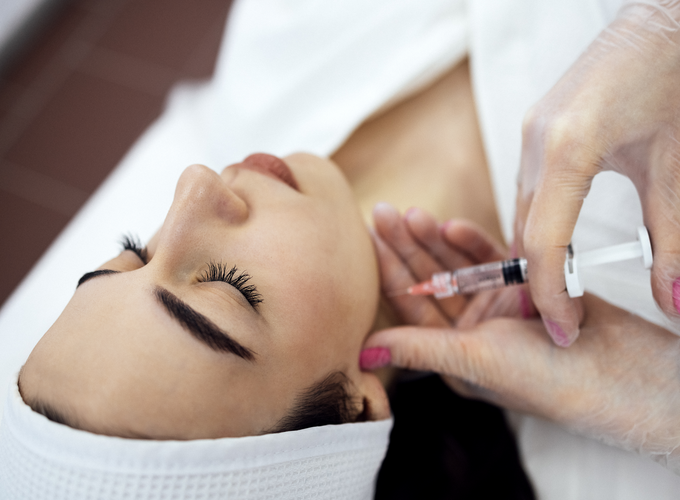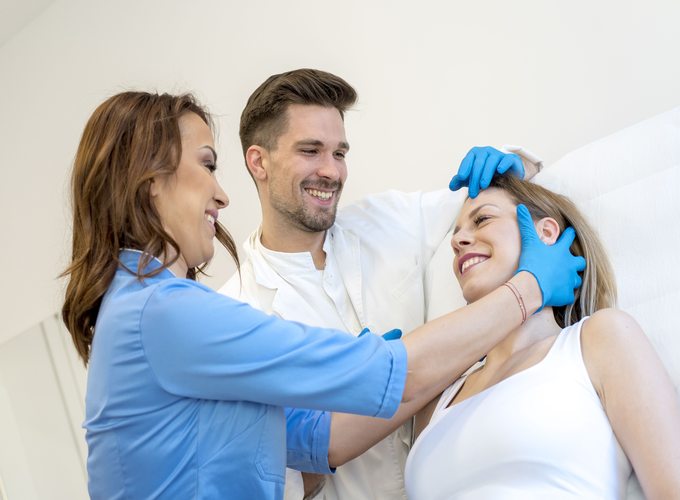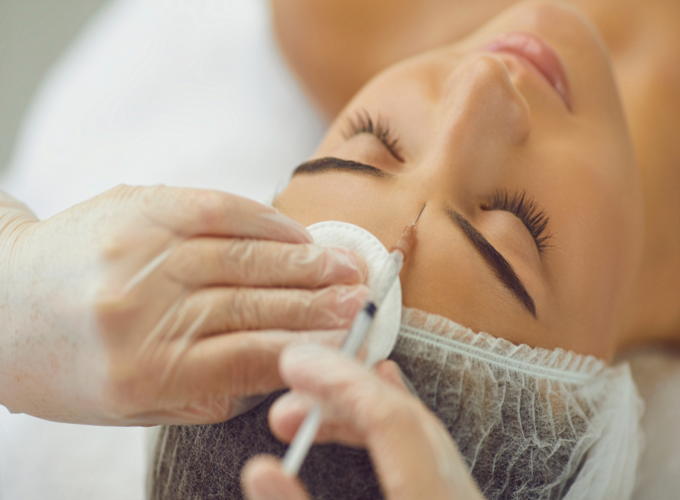Botox, a popular treatment for facial wrinkles, has become a household name in cosmetic and medical fields. But what does Botox actually do? Derived from botulinum toxin, Botox works by blocking nerve signals, preventing muscle contractions that cause wrinkles. Let’s explore the various uses of Botox, how it works, what to expect during the treatment, and its surprising medical applications beyond aesthetics.
How Does Botox Work?
Botox is derived from botulinum toxin, a neurotoxic protein that temporarily paralyzes muscles by blocking nerve signals. When injected into specific facial muscles, it stops the communication between nerves and muscles, preventing them from contracting. This temporary paralysis helps in relaxing the muscles that are responsible for causing wrinkles due to repetitive movements, such as frowning, smiling, or squinting.
Botox and Muscle Relaxation

The key function of Botox lies in its ability to block neurotransmitters, specifically acetylcholine, which is responsible for triggering muscle contractions. By preventing the release of this neurotransmitter, Botox stops the muscle from contracting. This leads to a relaxed state of the targeted muscles, particularly those that cause dynamic wrinkles.
Over time, as these muscles stay relaxed, the overlying skin also smoothens, reducing the appearance of fine lines and deep wrinkles. This process is highly effective in areas where facial expressions are frequent, such as the forehead, between the eyebrows, and around the eyes.
Impact on Dynamic Wrinkles
Dynamic wrinkles are the result of repetitive facial expressions. Each time you frown, smile, or squint, specific muscles contract and cause the skin to crease, forming lines and wrinkles over time. Botox works by targeting these expression-related muscles, preventing their activity and smoothing the overlying skin.
The most common areas treated with Botox include frown lines (between the eyebrows), crow’s feet (around the eyes), and horizontal forehead lines. This leads to a more youthful, rejuvenated appearance without altering the natural look of the face.
What Conditions Does Botox Treat?
Botox, commonly known for its cosmetic uses, is highly versatile and effective in treating a range of both aesthetic and medical conditions. The botulinum toxin in Botox works by temporarily relaxing muscles, which has beneficial effects not only on wrinkles but also on various medical ailments. Its dual functionality has made Botox one of the most widely used treatments in cosmetic dermatology and beyond.
Cosmetic Benefits of Botox

Botox is FDA-approved for treating the visible signs of aging, particularly in areas of the face prone to wrinkles due to frequent muscle movements. Over time, repetitive facial expressions, such as frowning or squinting, create lines that deepen and become more prominent. Botox is primarily used to treat dynamic wrinkles like frown lines (glabellar lines), horizontal forehead wrinkles, and crow’s feet (the fine lines that form around the eyes).
By injecting small amounts of botulinum toxin directly into the targeted facial muscles, Botox temporarily paralyzes them, preventing further contraction and allowing the overlying skin to smoothen out. This treatment softens the appearance of existing wrinkles and also prevents new ones from forming, offering a refreshed and more youthful look.
Medical Applications
In addition to its cosmetic uses, Botox has several FDA-approved medical applications. One of its primary medical benefits is the treatment of chronic migraines. Botox injections can help reduce the frequency and severity of migraines by relaxing muscles and blocking pain signals. It is also highly effective in treating hyperhidrosis, a condition characterized by excessive sweating, by temporarily blocking the nerve signals that trigger sweat production.
Other medical applications include treating muscle spasms like cervical dystonia (involuntary neck muscle contractions) and TMJ (temporomandibular joint) disorders. Botox can even address issues like overactive bladder and uncontrollable blinking. These medical uses showcase Botox’s wide-ranging capabilities beyond aesthetics, improving the quality of life for patients dealing with these conditions.
What to Expect During a Botox Procedure
A Botox procedure is known for being quick, simple, and relatively painless. Patients often choose Botox not only for its cosmetic benefits but also because the treatment requires little preparation and no extensive recovery time. Understanding the steps involved can help ease any apprehensions and ensure a smooth experience.
The Injection Process

The Botox injection process is minimally invasive and typically lasts around 10-15 minutes. After arriving at your appointment, your medical professional will clean the treatment area to ensure it’s free of makeup, oil, and bacteria. Depending on your sensitivity, a topical numbing cream or ice may be applied to reduce any discomfort. Using a fine needle, the practitioner will inject small amounts of botulinum toxin into the targeted muscles.
The number of injections depends on the areas being treated and the severity of wrinkles. Most patients report feeling only a mild pinch, if anything at all. The precision of the injection process ensures that the toxin is delivered exactly where needed, without affecting nearby areas. This results in the smoothing of wrinkles while maintaining a natural look.
Recovery and Results
After the procedure, there’s virtually no downtime. You may experience slight redness, swelling, or bruising at the injection site, but these effects typically subside within a few hours or days. It’s important to avoid rubbing the treated area to prevent the toxin from spreading. Results usually begin to appear within 3 to 7 days, and the full effect is visible after two weeks, lasting 3 to 6 months.
Is Botox Safe?
Botox is considered a safe and effective treatment for both cosmetic and medical purposes when administered by a licensed, experienced medical professional. With millions of treatments performed annually worldwide, it has built a strong track record for safety. However, as with any medical procedure, understanding potential risks and following aftercare guidelines is essential to ensure optimal results and minimize complications.
Common Side Effects
Botox injections are generally well-tolerated, with most patients experiencing only mild, temporary side effects. The most common side effects include minor redness, swelling, and bruising at the injection site. These reactions typically subside within a few hours or days. In rare cases, patients may experience mild headaches, flu-like symptoms, or muscle stiffness.
In extremely rare instances, improper injection technique or toxin migration could result in asymmetry or temporary drooping of the eyelids or facial muscles. This is why it’s crucial to have Botox administered by a qualified and experienced professional to minimize these risks and ensure the best results.
Long-Term Safety
Botox has been safely used for decades, and long-term studies support its efficacy and safety. When performed by certified professionals, the risk of serious side effects is minimal. While Botox is a temporary treatment, repeat injections over time do not seem to cause cumulative damage to the muscles or skin.
Patients who undergo long-term Botox treatments report consistent, satisfying results with no significant complications. However, to maintain safety, following post-procedure instructions and regular consultations with your practitioner is key.
Conclusion
Botox, derived from botulinum toxin, offers a versatile solution for both cosmetic and medical issues. Whether you’re seeking to reduce wrinkles or alleviate a medical condition like migraines or excessive sweating, Botox provides a non-invasive option with minimal side effects. For those considering this treatment, understanding what Botox does and how it works can help set realistic expectations and ensure the best results. Remember, Botox is a safe and effective treatment when performed by qualified professionals.
FAQ
How long do Botox results last?
Botox results typically last between 3 to 6 months, after which additional treatments are needed to maintain the effect.
Can Botox be used for non-cosmetic purposes?
Yes, Botox is also used to treat medical conditions such as chronic migraines, excessive sweating, and muscle spasms.
Is Botox painful?
Most patients report minimal discomfort during Botox injections. Numbing options like ice or topical anesthetics can help reduce any pain.
When will I see results from Botox?
Botox results begin to appear within 3 to 7 days, with full results visible after about two weeks.
Are there any risks associated with Botox?
While Botox is generally safe, rare side effects can include drooping eyelids or uneven results if administered incorrectly. Always consult a certified professional.
The post What Does Botox Do? appeared first on Spa in the City.
source https://spainthecitydallas.com/what-does-botox-do/


